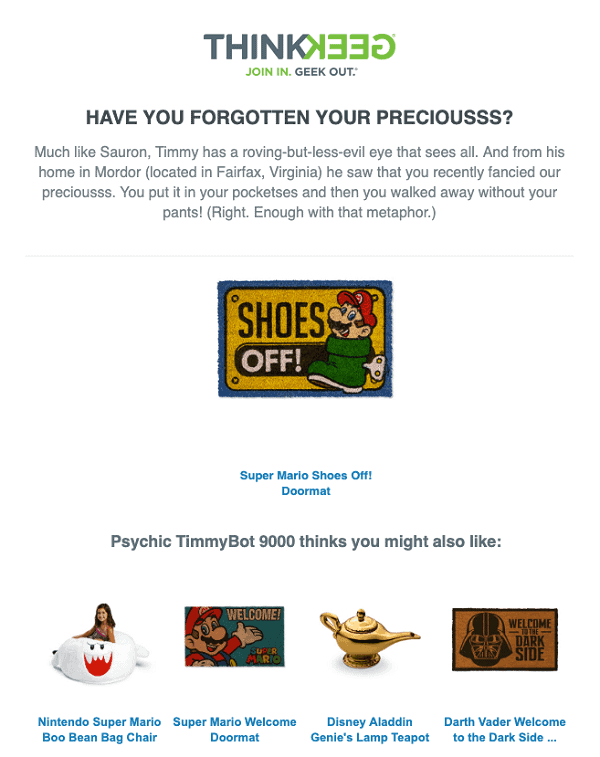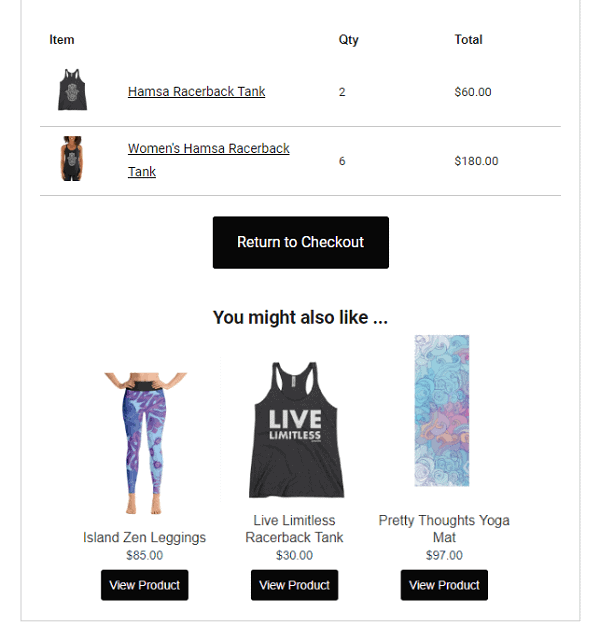Few things in life are as discouraging as the feeling of being “so close, yet so far”. For ecommerce marketers, this feeling is best embodied by a growing list of prospective customers who have abandoned their cart.
You’ve brought them so far down the sales funnel. You’ve attracted their attention with an effective SEO and social media strategy. You’ve impressed them with a beautiful, user-friendly website. You’ve caught their eye with products they’re excited enough about to put in the extra effort to add to their cart.
And once you’re about to cross the ecommerce finish line by making a sale, they’re gone.
Fortunately – or perhaps unfortunately – you aren’t alone. According to research compiled by Statista, a staggering 75% of online shopping carts were abandoned last year for a variety of reasons. Some of the most commonly reported via AnnexCloud include:
 While this data might be a cause for concern, it does provide you with a wealth of information that can be used strategically to lower your ecommerce business’ abandoned cart rate. Integrating these 5 steps into your abandoned cart emails will help to re-engage your customers and encourage them to commit to completing the transaction they began with.
While this data might be a cause for concern, it does provide you with a wealth of information that can be used strategically to lower your ecommerce business’ abandoned cart rate. Integrating these 5 steps into your abandoned cart emails will help to re-engage your customers and encourage them to commit to completing the transaction they began with.
1) Write an Eye-Catching Subject Line
With a stunning 269 billion emails sent per day, it’s absolutely essential that your abandoned cart emails have a catchy subject line if they want to stand a chance of even being acknowledged.
The majority of successful abandoned cart email marketing campaigns have two shared elements:
1) They’re straight to the point.
2) They’re personable.
It’s not uncommon for ecommerce businesses to use sensationalized or “clickbait-y” subject lines in order to entice the recipient to read further (ie: “Your $500 gift card is here!” when the user merely has a chance to win said gift card). Abandoned cart emails, on the other hand, are straightforward in their objective. Their tone is similar to that of a concerned friend, using clear and concise subject lines such as “Did you forget something?” and “You left this in your cart!” to gently remind them to finish their transaction.
If it fits your brand voice, experiment with incorporating playful and even humorous elements into your subject lines. We’ve used the line “‘I Miss You!’ – Your Shopping Cart :(“ in a previous abandoned cart email series, and it received a notably higher click-through rate than some of our simpler subject lines.
2) Create Compelling Copy
Catching your recipients’ attention with a killer subject line is only half the battle – the body of your email is where the real magic happens.
The language, tone and style of your email helps to establish your brand identity, and abandoned cart emails especially serve as the ideal platform from which to insert some personality into your copy.
Take this abandoned cart email from Adidas, for example. This email copy is oozing with confidence from the get-go, implying the only reason someone would dare abandon this particular shoe is because their WiFi went out. This same air of confidence carries on to the end of the email, where the recipient is encouraged to read reviews corroborating Adidas’ claim of an “iconic” shoe status.
 via BigCommerce.com
via BigCommerce.com
While Adidas leads with the universal acclaim of their brand, ThinkGeek’s abandoned cart emails speak directly to a very niche audience. To someone outside of ThinkGeek’s target clientele, the numerous pop culture references sprinkled throughout this email copy would go right over their heads. However, ThinkGeek is fully tapped into the interests of their loyal fanbase, and “speaking their language”, per se, could be the clincher that gives them an edge when closing a sale.
 via Active Campaign
via Active Campaign
3) Add Visual Appeal
A picture may be worth a thousand words, but how much is a picture really worth when it could be the difference between making and losing a sale?
According to a 2018 study, the average consumer spends approximately 5 hours per week shopping online. With this in mind, it’s very likely that the consumer who abandoned their cart on your website has been browsing similar products on your competitors’ websites, as well. Prioritizing visuals in your email not only reminds the recipient which product they left in their cart, but also helps to showcase your products in the best light possible.
Utilize high-quality, professional photography in your abandoned cart emails to remind your recipients why they were so close to buying that product to begin with. To take your visuals a step further, consider including short videos and/or gifs to your abandoned cart emails so the recipient can see the product in motion. This is especially useful for products that are not explicitly self-explanatory in photos alone, as that could have been the deterrent that prevented a customer from buying that product. Eye-catching visuals paired with great copy could be the one-two punch that completes the transaction.
4) Include an Offer
Two of the five most common reasons for cart abandonment listed above are related to cost concerns. A very easy and effective way to remedy this is to include a special discount in your abandoned cart emails. Even an offer as small as $5 off a purchase can help offset shipping costs, and it shows your recipients you care about their shopping experience.
Too much of a good thing can quickly become a bad thing, however, and this is especially true when it comes to ecommerce coupons. If your business regularly sends discount codes in your standard email coupons will lose their novelty and will become an expectation. If you want to utilize coupons as a selling feature in your abandoned cart emails, consider cutting back on discounts in your other promotional materials so your customers do not grow accustomed to receiving them regularly.
5) End With a Cross-Sell
There are countless reasons someone may have abandoned their cart.
But the fact that they opened your abandoned cart email at all shows there is still an opportunity to sell – or even better, to cross-sell.
Cross-selling is a sales technique used to encourage shoppers to make a larger purchase by recommending products related to those already in their cart. For instance, a company might attempt to cross-sell a specialty lens to a shopper who left a camera in their cart, or even a matching blanket to a shopper who abandoned a set of pillowcases.
 Take this abandoned cart email we created for Apeiron Yoga, for example. Now that the recipient has been charmed by quirky copy, enticed by a special offer and reviewed photos of the products in their cart, the grand finale is to present additional products that pair well with their order. Cross-selling products – whether intentionally curated or based on the shopping habits of past customers – allows your recipient to easily visualize how each of the items listed makes sense with the items they were interested in initially.
Take this abandoned cart email we created for Apeiron Yoga, for example. Now that the recipient has been charmed by quirky copy, enticed by a special offer and reviewed photos of the products in their cart, the grand finale is to present additional products that pair well with their order. Cross-selling products – whether intentionally curated or based on the shopping habits of past customers – allows your recipient to easily visualize how each of the items listed makes sense with the items they were interested in initially.
Congratulations!
Now that you’ve reached the end of this article and read through all five steps to improving your abandoned cart emails, you’ve officially completed Phase 1 of decreasing your cart abandonment rate.
Now starts Phase 2 – implementing what you’ve learned.
The best way to appeal to your customers is to relate to your customers. Take a deep dive into your own inbox and sift through some of the abandoned cart emails you’ve received over the last few months. Which of the elements they used caught your eye as a consumer? Which do you think would catch the eyes of your own consumer base?
Now, put these elements into motion the best way you see fit. Maybe you feel confident enough to handle an ecommerce campaign on your own. However, be certain you are able to keep up with the time, resources and experience needed to successfully conduct research, organize data, draft copy, and track your results.
If you have any doubts about the commitment needed to handle your abandoned cart email strategy on your own, consider placing it in the hands of a professional. Working with an experienced digital marketing agency like ours will allow you to not only amp up the content within your emails, but also analyze data to determine what’s working, what isn’t, and where there’s room to improve your abandoned cart email game even further.





